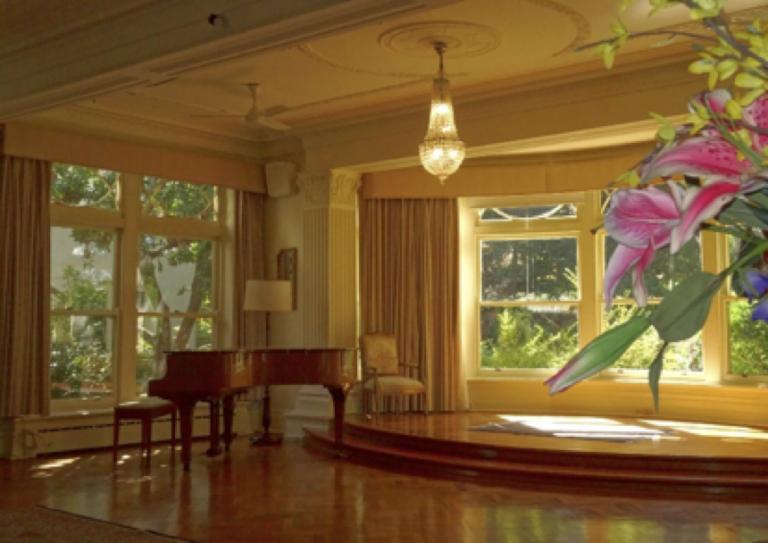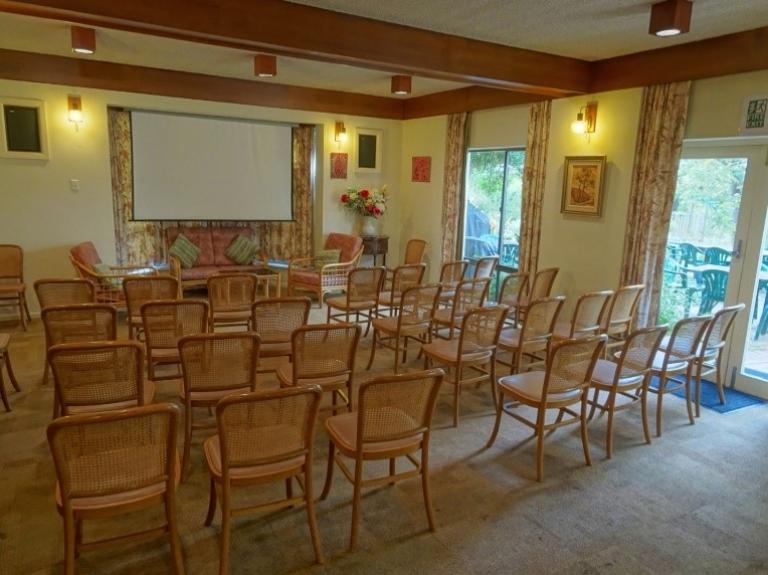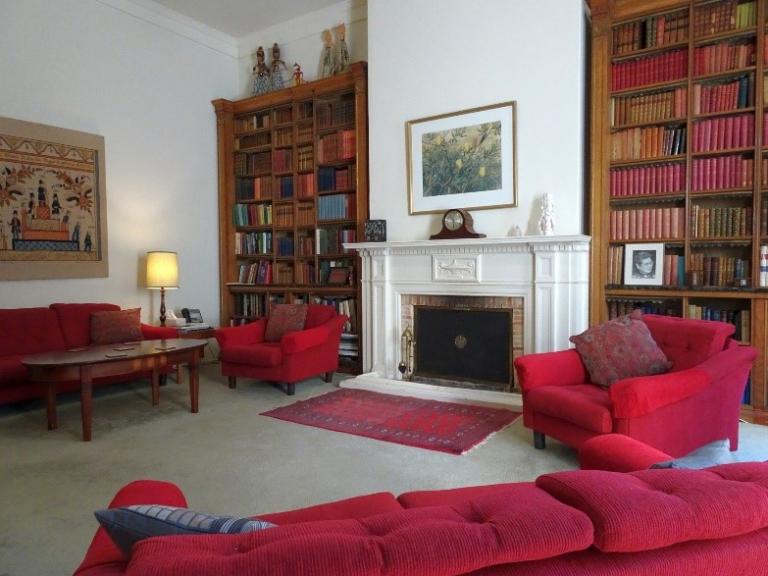IofC Community Marks 60 Years at ‘Armagh’
Amid Toorak’s tree-lined streets lies a house that epitomizes generosity and a vision for a just, peaceful and sustainable world – built on a single, extraordinary, unselfish act. It is now 60 years since Armagh became the Asia-Pacific Centre for Initiatives of Change (then Moral Re-Armament, or MRA) through the magnanimity of industrialist Cecil McKay.

With its spacious, light-filled rooms, the outdoor picnic area that lets you enjoy the warmth of the Aussie sun, the green lawn, and the nooks where you can sit and read, Armagh still feels like the family home it once was.
John Gurner, KC, commissioned Melbourne architect W.A.M. Blackett to design Armagh as a family residence. The house was completed in January 1913. The property subsequently changed hands and was bought in 1937 by Cecil McKay, son of agricultural machinery pioneer and industrialist H.V. McKay. In 1956, when MRA was looking to set up the Asia Pacific arm of MRA in Melbourne, Armagh was on the market for sale.
Jim Coulter was then a full-time volunteer with MRA. He recounts how MRA put in a bid much below the market price and ‘McKay threw his arms up and laughed and showed us the door.’ Two weeks later, to their utter disbelief, McKay gifted the house to them, as he believed MRA was ‘a force for good in a troubled world.’ There was one condition: that his gift be kept confidential.
‘How on earth will we run it?’ was the first question that sprang to Jim’s mind at that point. ‘It was a gift not only to Australia but to the Asia Pacific,’ he said, reflecting the immense gratitude the members felt. In this magnanimous gesture, the McKays, in 1956, exemplified a key principle of IofC – be the change you want to see.
When Armagh was gifted in 1956, MRA was an international network and social movement of people who had been exposed to the ideas of the American Christian minister Frank Buchman. The community in Australia was a loose association of people seeking to live out the ideals of the movement. In order to accept the gift, the network needed to be formalised, and in 1956 MRA was incorporated as a company.

The house was handed over with carpets, drapes and two paintings by local artist Ernest Buckmaster. ‘The initial days were like a circus,’ said Coulter, remembering how they had to move the only furniture they had - an armchair and couch - from room to room as needed. As the years passed, Armagh was furnished through the generosity of the individuals who passed through its doors. Supporters donated treasured family heirlooms, and many gave their time to set up the former Mackay family home as a sanctuary, a place to think, reflect and be together. Some fine pieces of furniture, originally from stately homes in England add to the atmosphere and history of the Armagh. In 1976 an extension was built to the house to accommodate the larger groups that were coming through its doors for training programmes.
Cheryl and Rob Wood were a part of Armagh for many years, moving in together as a couple in 1983, and eventually playing the role of hosts to a shifting community of up to 40 people at a time. As Cheryl recalls, residents cooked meals together and met up regularly to share stories, while jobs like shopping and throwing out the garbage had to be rostered to ensure they were done on time! While some couples with children eventually moved out for want of space for their growing families, Cheryl and Rob Wood stayed on in the house until 2011.
Reflecting on their experiences, Cheryl reflects: ‘Communal living requires a different mindset - a willingness to accept that in each of us there is “light in the dark” and to embrace our shadow side in our interaction with others.” This was what the Armagh experience sought to cultivate in people, the ability to look within oneself for the change needed to make living together with others more harmonious.
Nestled in the upmarket suburb of Toorak in Melbourne, Armagh has seen people from all backgrounds and cultures pass through its doors to embrace the diversity around them with joy. Visiting political leaders, waterside workers, refugees – all have been welcomed at Armagh. Guests have included Aboriginal elder and early activist ‘Aunty’ Marge Tucker and British tennis star Bunny Austin. ‘I grew up in an Anglo country community in the 1970’s where I didn’t know anyone from any other culture,’ Cheryl recalls. ‘Armagh was where I met the world and formed lasting friendships.’
Events at Armagh since the 1970’s have included opportunities for youth of different communities to meet and share life lessons, women’s peace circles, conferences, concerts and theatre productions. Some of the outcomes of these events have been the formation of ‘Global Club’, a once-a-month opportunity in which young people have met up for picnics, games and debates; ‘First Friday Films’, a winter-time film series combining thought-provoking documentaries with speakers and discussion time; and the long-standing Monday men’s lunches and ‘Tuesday ladies’ group.

house has been the venue for people to get to know each other, become a source of comfort to one another, and form deep and lasting friendships. Tying these diverse threads together is the regular practice of ‘quiet time,’ in which visitors and residents listen, each in their own way, for divine guidance and the promptings of their own hearts. The prayer and contemplation practised here, stemming from different religious traditions, have helped make Armagh the haven of peace that it is.
Reflecting on the 60-year milestone, long-term IofC volunteers have expressed the hope that Armagh will continue to be a place that brings people together, irrespective of their differences. Looking to the future, Coulter observes, ‘Armagh will become what people make of it.’ - Parveen Muhammed
- Armagh is available for event bookings, and a discounted rate for not-for-profit organizations can be negotiated. For details, contact events.au@iofc.org More photos and information about Armagh are here: http://au.iofc.org/armagh

